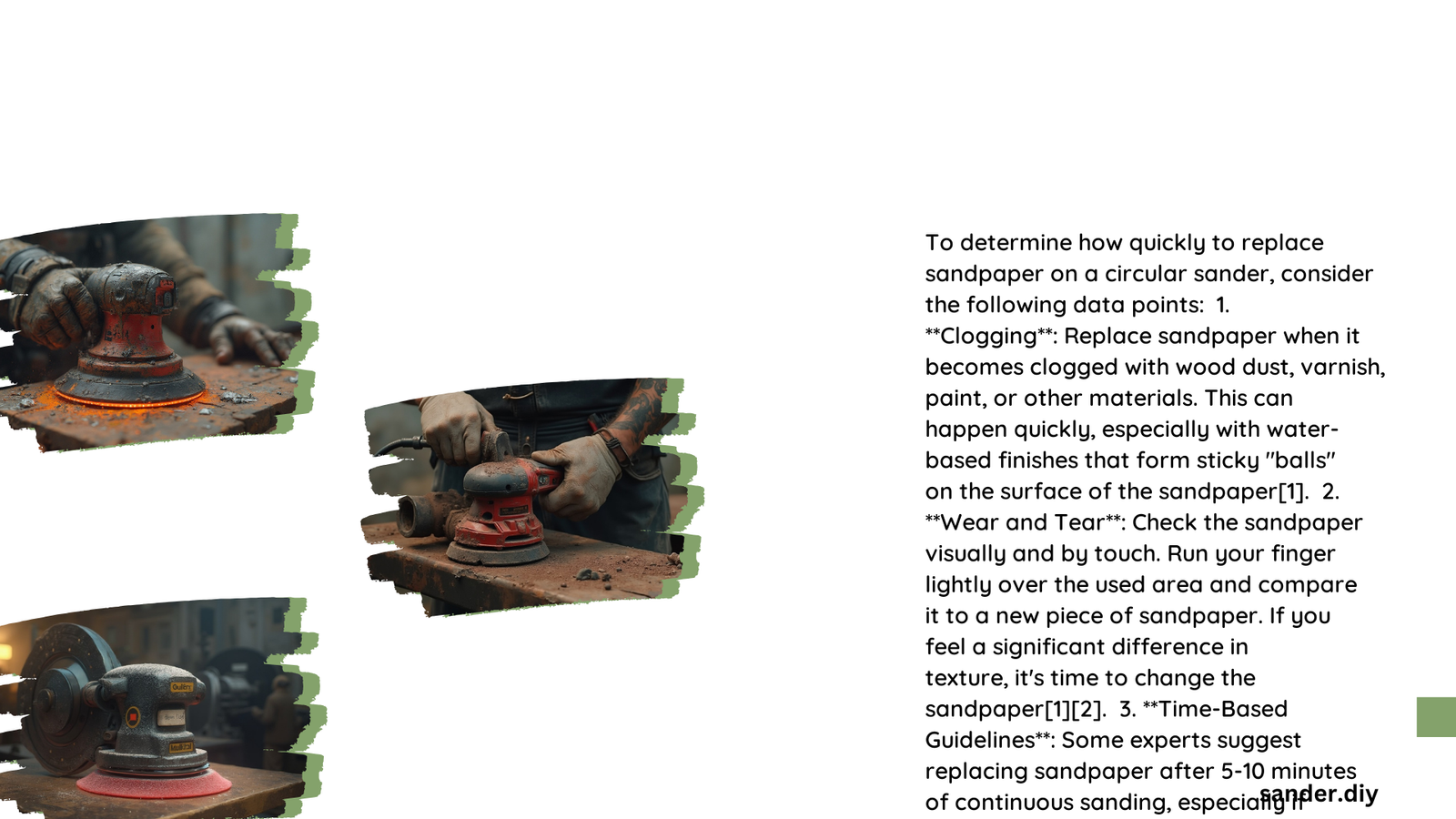Replacing sandpaper on a circular sander is crucial for maintaining optimal sanding performance and achieving high-quality woodworking results. Professional woodworkers and DIY enthusiasts must understand the nuanced factors that determine when to swap out sanding discs, considering material hardness, grit type, usage intensity, and visual wear indicators to ensure precise and efficient surface preparation.
What Determines Sandpaper Replacement Frequency?
How Often Should You Assess Sandpaper Condition?
Sandpaper replacement frequency depends on multiple critical factors:
| Factor | Impact on Replacement |
|---|---|
| Wood Hardness | Higher density woods wear sandpaper faster |
| Sanding Grit | Coarser grits deteriorate more quickly |
| Surface Area | Larger projects require more frequent replacements |
| Sanding Pressure | Excessive pressure accelerates wear |
Key Indicators for Sandpaper Replacement
- Visual Performance Decline
- Reduced material removal efficiency
- Visible smoothing of abrasive surface
-
Noticeable clogging or residue buildup
-
Tactile Assessment
- Decreased roughness compared to new sandpaper
- Smooth texture indicating worn-out abrasives
- Reduced cutting capability
What Impacts Sandpaper Lifespan?
Different materials significantly influence sandpaper durability:
- Hardwoods (maple, oak): Faster sandpaper wear
- Softwoods (pine, cedar): Slower deterioration
- Finished Surfaces: Additional complexity in wear patterns
- Metal Surfaces: Rapid abrasive breakdown
How to Maximize Sandpaper Effectiveness?
Practical strategies for extending sandpaper life:
- Clean sandpaper regularly using rubber erasers
- Avoid excessive sanding pressure
- Use appropriate grit progression
- Store sandpaper in dry, controlled environments
- Invest in high-quality abrasive materials
What Are Recommended Replacement Intervals?
Typical replacement guidelines:
- Coarse Grits (80-100): 15-30 minutes of continuous use
- Medium Grits (120-150): 30-60 minutes of sanding
- Fine Grits (220-240): 60-90 minutes of continuous work
How to Recognize Worn-Out Sandpaper?
Expert detection methods:
- Performance test: Measure material removal rate
- Visual inspection under bright light
- Compare new and used sandpaper texture
- Monitor sanding efficiency and smoothness
Cost-Effective Replacement Strategies
- Purchase sandpaper in bulk
- Select high-quality abrasive materials
- Rotate multiple sanding discs during projects
- Invest in professional-grade sanders with efficient dust collection
Conclusion

Understanding sandpaper replacement is essential for maintaining superior woodworking quality. Regular assessment, proper technique, and strategic replacement ensure optimal sanding performance.
